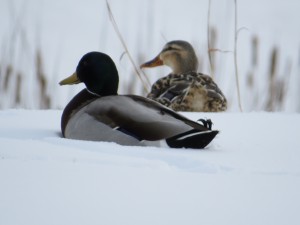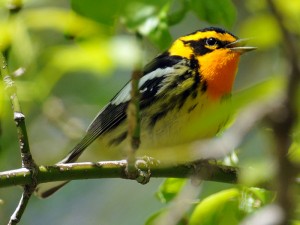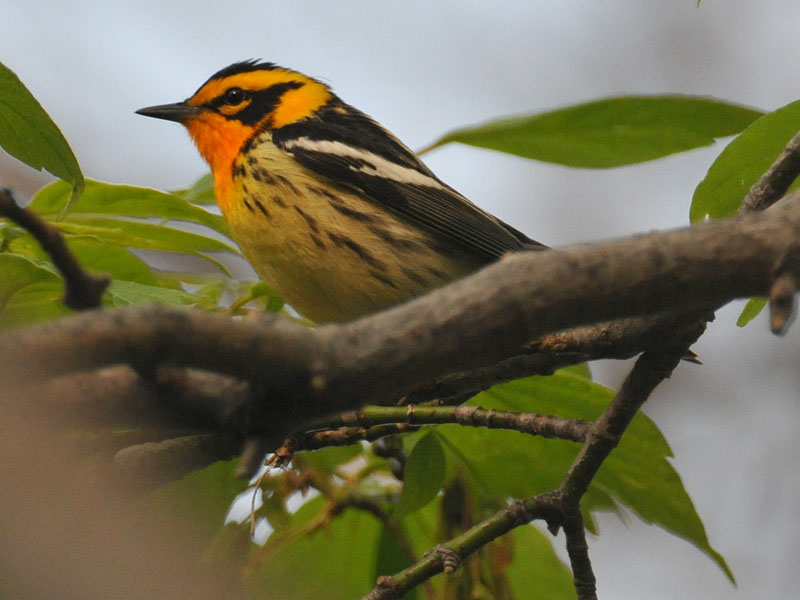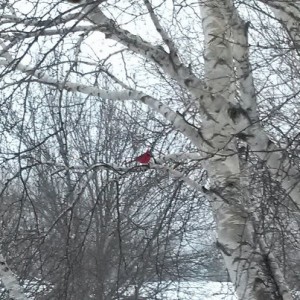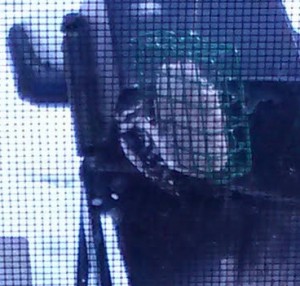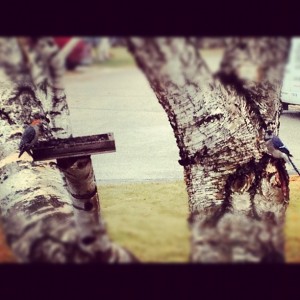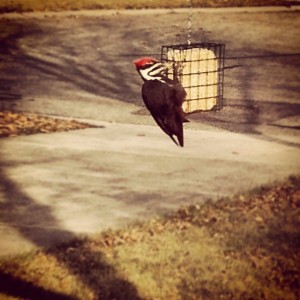Monthly Archives: December 2012
Common Loon
American Coot
Trumpeter Swan
Snow Goose
Canada Goose
Mallard
Wood Duck
A Glowing Flame in the Treetops
It’s cold outside, so there’s not a lot of birding going on with the Team. We’re anxious for warm spring days with more hours of daylight where we can get out and add new birds to our life lists and see some of our familiar favorites again. For now, however, we can reflect on some of our adventures from last summer.
Last spring I purchased a Jayco pop-up camper so I could take my family on all kinds of camping trips. For two teachers with young kids, there couldn’t be a better way to enjoy our summer vacation. One of our camping trips landed us at Bear Head Lake  State Park near Ely, MN. With its pristine lakes and towering stands of white and red pines, it is no wonder that it was voted as America’s Favorite Park in a 2010 nationwide campaign sponsored by Coca-Cola.
State Park near Ely, MN. With its pristine lakes and towering stands of white and red pines, it is no wonder that it was voted as America’s Favorite Park in a 2010 nationwide campaign sponsored by Coca-Cola.
Minnesota’s State Parks have a variety of programs and activities nearly every day. Coincidentally, one of those programs when we were at Bear Head was a birding walk with a local birding expert. Perfect. So Evan and I woke up early to meet the tour guide and other birders at the visitor center for a 7 AM start. That’s right, the early bird gets the…bird. About twenty of us walked the paths and roads of the park just to see what we could see. The group would stop whenever a bird was spotted or heard. We observed a variety of birds including the Yellow-Bellied Sapsucker, Red-Eyed Vireo, Mourning Warbler, Chestnut-Sided Warbler, Ruffed Grouse, and several others. As we walked, the guide educated 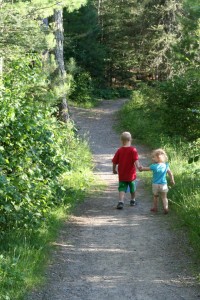 us on the songs and habits of many of these birds. Birding is a visual and auditory experience. I found the guide’s information on bird songs so helpful. If you’ve never been in the woods in northern Minnesota in the summertime, then you don’t realize just how noisy it is with bird songs! Armed with our new knowledge, however, Evan and I learned to easily discern the songs of the different species. He is better at it than I am.
us on the songs and habits of many of these birds. Birding is a visual and auditory experience. I found the guide’s information on bird songs so helpful. If you’ve never been in the woods in northern Minnesota in the summertime, then you don’t realize just how noisy it is with bird songs! Armed with our new knowledge, however, Evan and I learned to easily discern the songs of the different species. He is better at it than I am.
Toward the end of our walk, our guide spotted a Blackburnian Warbler. She was watching it with her binoculars about 30 yards in front of us. I strained to see it through my binoculars, but I just couldn’t pick it out. I was frustrated because this was a bird I really wanted to see. In his Field Guide to Birds of North America, Kenn Kaufman appropriately describes this bird as a “glowing flame of the tree tops.” Still not seeing the bird, we moved on and finished up our tour.
Photo Credit: Chris Thomas
The next day Evan and I went for a walk on the same path that our tour went on the day before. We were after one goal – to find the Blackburnian Warbler. We got to the same place the guide had spotted one, a gravel road running through a mixed stand of white pines and aspen trees about 50-60 feet tall. Evan and I had been listening to the Blackburnian’s song on the Audobon Society’s Bird Field Guide App the day before. As we walked this road, we heard the song. Instantly our eyes were scanning all around the tops of the trees as that is where these warblers tend to dwell. Finally we saw a bird flitting about, but I could not make a positive ID through the binoculars, especially since branches and leaves obscured our ability to see him. Evan hasn’t figured out how to master binoculars yet, so he was just using his naked eyesight. I lost sight of the bird, but Evan picked it out. This bird is about 4 in. long in the top of a 60 foot tree, and he spotted it with his naked eye! It just happened to be on a bare branch. I put the glasses up and looked. Sure enough, this gorgeous orange-headed bird popped against the bright green leaves of the trees. What a treat it was to see! If only Evan could have seen it up close and shared in this excitement. This was a classic birding experience – seeing what we set out to find. We can’t wait to go out and find other fascinating birds this coming spring.
These amazing photos were taken by Chris Thomas, someone I met through Twitter. Chris is from the UK and has photographed over 500 bird species in the UK and US. He has graciously allowed me to use some of his photographs for this post. I highly recommend visiting his website of bird pics: Christ Thomas American Bird Photography.
Photo Credit: Chris Thomas
Couch-Potato Birding…
…also known as bird watching. What’s the difference between bird watching and birding? Quite a bit actually. Bird watching is a more passive activity in which feeders are set out and you wait to see who comes by for meal. Usually people bird watch from the comfort of their homes. On the other hand, birding is a much more active pasttime that involves going out into different types of habitat to locate and identify as many birds as possible, or it is simply an effort to go hunting a specific species. It can be quite physical as you need to do a lot of hiking and moving about. While successful bird watching requires patience and luck, birding success comes about by doing one’s homework on bird habitats, migratory patterns, and bird behaviors. Then you need to know the subtle differences in bird species to make an identification on the fly (pun intended). By actually going out to look for birds in different areas, you stand to find many more types of birds than just staying home where there is a limit on the species you’re going to see. In a future post I will describe how this more active approach played a role in turning me on to birds.
So is our Team a group of birdwatchers or birders? Both. We all enjoy the hunt of going into the field, and we also love to watch what comes to the feeder. Right now in the middle of winter, my wife and I lead busy lives as teachers who are raising two kids under the age of 5. There isn’t a lot of time to go birding right now, unfortunately. It’s also really cold in Minnesota. So we do a lot of couch-potato birding – making sure the feeder is kept full of seeds and the suet cage is stocked with delicious animal fat, and then we sit inside the house and watch. We’ve never fed the birds consistently in the winter before this year. What success we have had since we started a couple months ago! I had no idea that we would get so many cool species dropping by. We had a lot of activity yesterday: a pair of Northern Cardinals, Blue Jays, a Red-Bellied Woodpecker, a Downy Woodpecker, Dark-Eyed Juncos, Eurasian Collared Doves, Black-Capped Chickadees, and a whole assortment of sparrows. One note on the Red-Bellied Woodpecker: its name is a misnomer. The only red on it is on the back of its head. Go figure. You can see this in the photograph beneath this one of the Downy Woodpecker.
Not all the pictures in this post are from yesterday; some are from earlier this fall. We’ve also had the Pileated Woodpecker drop by (Holy cow, are they big and prehistoric-looking!), and we’ve had both the White-Breasted and Red-Breasted Nuthatches. We even had the Hairy Woodpecker. The Hairy and the Downy look nearly identical, except one is a couple inches longer than the other. I missed a golden opportunity to highlight this difference with a photograph when both species were on the suet feeder at the same time.
I realize we don’t have high quality bird photos to show you, but we are amateurs who are just getting started in this hobby. (I just found out about phone scopes – super cool!) It is my goal to be able to photograph birds well so that we can have attractive photos for you and make our stories that much more exciting. If you are a birder who has some advice for bird photography, help us out by giving us some advice. For now, though, I hope you can appreciate some of the diversity we’ve had in our bird feeder activity.

